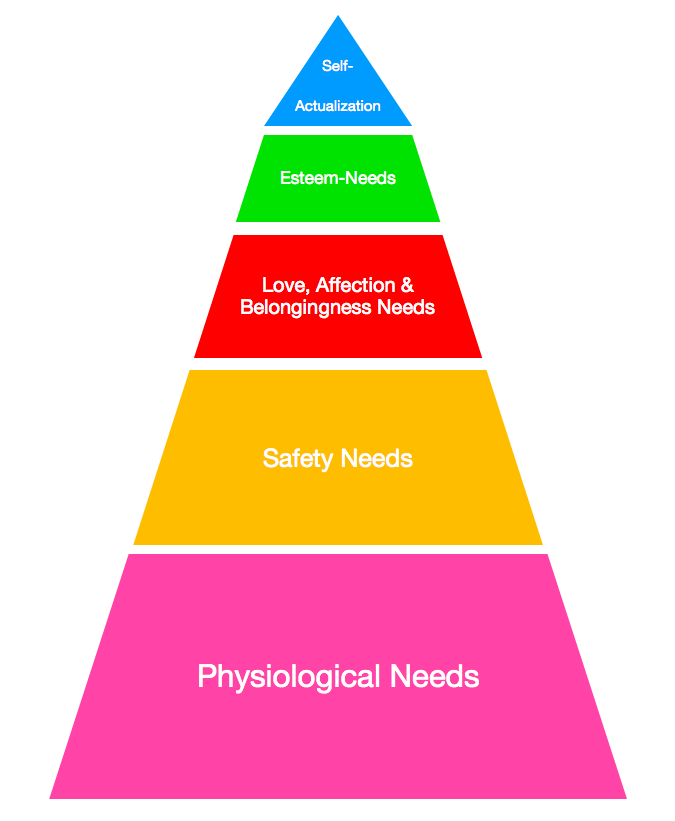The Consumer Decision Making Process Explained
How The Consumer Decision-Making Process Can Be Influenced
How do consumers find your product? Why do they buy from you? Convenience is definitely one factor, but there are so many others. Also, let’s not forget that, unless you’re the new-age Einstein, your product or service probably already exists. So, how can you influence the consumer decision-making process? How can you build more loyal relationships with consumers? First, we have to understand the process consumers go through to make a single decision, and only then can we explore ways to improve a brands’ image and perception.
THE CONSUMERS NEEDS
Usually, consumers identify their needs on their own by comparing their actual state of being to their ideal state – what do they need to make themselves feel better? Internal influences are when a previously bought product or service is depleted or needs to be renewed, dissatisfaction with the current product or service they have, or new needs. New needs are based on changes in the consumers’ life such as lifestyle, health, finance, occupation, family expansion, culture, and knowledge. Other times, there is an external influence such as an advertisement or a trusted person raving about a certain brand. Trusted people include friends, family members, and social media influencers. Other influences are related to recent and relevant purchases such as accessories and add-ons.
THE CONSUMER MOTIVES
In 1971, Maslow created “The Hierarchy Of Needs” based on deep psychoanalysis. The way the pyramid works is the lowest level is basic human needs to survive and the highest level is to reach maximum satisfaction in all aspects of life. If any of the needs aren’t met, consumers feel isolated, deprived, bitter, fearful, inferior or tense.

- Physiological Needs
- Based on what is essential to human survival
- Oxygen, water, food, shelter
- Without it, life is at risk
- Safety Needs
- Felt by adults in life-threatening emergencies
- Also, affects individuals who have strong insecurities and have needed to feel safe since their childhood
- Love, Affection & Belongingness Needs
- Effective advertising, recommendations, and brand reputation influence these needs
- Consumers feel the need to belong in society in fear of being alone and alienated
- Consumers on this level are insecure and need to be recognized as part of a group or community
- Esteem Needs
- These individuals need a high level of self-respect as well as respect from others
- Approval seeking, trend following consumers
- These consumers feel inferior and helpless if they don’t fulfill their esteem needs
- Self-Actualization
- These individuals believe they have a specific purpose in life – usually tied into their personal interests and career
- Most complex level of all needs, because it is not obvious what each person has to do to fulfill these needs
- If this need is not achieved, they feel relentless, tense and as if something is missing from their lives
INFORMATION SEARCH
The information search can be divided into two groups: internal information and external information.
- Internal
- Information is stored in the memory and is influenced by the consumer’s personal opinion and past experiences with the brand. Internal information is usually used for low involvement purchases such as everyday products
- External
- Information is presented by reliable sources such as friends, family, social media influencers, colleagues, brand reviews, and advertisements. External information can influence both high and low-level involvement purchases. Trusted sources such as friends, family, and colleagues will be regarded objectively since they are from reliable and highly influential sources.
EVALUATION AND ALTERNATIVES
- Objective approach: features and functionality of the product or service.
- Subjective approach: the perception of the brand and its’ reputation. The consumer perception is then divided into two other categories:
- Evoked set: consumers highly consider purchasing a product or service solely because of the brands’ reputation or the positive information collected.
- Inept set: consumers do not consider the product or service offered by specific brands because of the negative perception, memories associated.
PURCHASE DECISION
All of the previous steps will determine the consumers’ purchase decision such as the information collected, the evaluation and opinion of the product or service. Although it seems at this point the decision is set in stone, but it’s not. The purchase decision can still be affected by several factors such as a contrast in sales, the shopping experience, promotion, and the store’s return policy. These factors will also influence the post-purchase evaluation.
POST-PURCHASE EVALUATION
Once the product or service is purchased and put to use, the entire purchase process will be evaluated based on if the purchase fulfilled the individual’s initial need. If the consumer feels satisfied, then they may share their positive experience with friends, family, colleagues, on social media or write a positive review online. Their positive experience has the potential to encourage them to return to the same place of purchase for other products or services, which means they are building brand loyalty. Unfortunately, if the individual feels disappointed as though their needs have not been met or the experience was negative, the consumer is more likely to share their negative perspective or experience with friends, family, colleagues, on social media, and write a negative review online.
HOW TO INFLUENCE CONSUMER DECISION-MAKING
Make sure you are appealing to the right target market by advertising in the right places to create brand awareness. To effectively advertise, the brand needs to mimic the needs of the consumer and show how their product or service will fulfill that need. Consumers will feel a connection to the brand if their needs feel similar.
2. SEO Optimization:
Optimizing SEO keywords increases the chances of consumers finding your product or service easier. If you do not optimize SEO keywords, there is a high chance many consumers won’t even consider your product or service, simply because they cannot find it.
3. Social Media Influencers:
Having social media influencers is a sure way to create a positive perception of your product because consumers consider social media influencers as reliable sources. They also can give positive product reviews and product demonstrations to prove how effective your product is! How can this help? Social media influencers have a high follower count, therefore their reviews are seen by many people and shared onto other social media platforms with consumers friends and families.
4. Enhance The Buying Process:
Consumers base their satisfaction on the shopping experience. If the shopping experience was positive, they feel satisfied, and if the shopping experience was negative, they feel disappointed. If the store is online, consider the following:
- Optimize site to be easy to navigate through
- Allow personal account creation to reduce the check-out time
- Live chat for instant customer service
- Promotions such as “free shipping on purchases $xx and over”
- Have a return policy
- Have policies for consumer representatives to follow that align with the brands’ core values (i.e. welcoming, cheerful, etc.)
- Reduce wait time by offering more changing rooms and opening more cash registers
- Ensure the store is neat and easy to browse through – messy stores overwhelm customers
There are two ways this can be done. First, companies can delete negative reviews on their owned pages, but deleting the review doesn’t mean it’ll stop the next unsatisfied customer from writing a very similar one. Second, companies can respond to the reviews, address the issue, apologize and hope that the customer will have a better experience the next time. Both methods won’t be effective if companies don’t listen to the complaints from customers, they are basically giving you constructive criticism – not always in the best way, but it gives companies deeper insight into possible issues within the company. Listen to the angry, unsatisfied customers. They will appreciate the fact the companies are adhering to their unmet needs, and it gives the company the advantage to make minor adjustments which can attract more customers, increase customer satisfaction and build more long-lasting relationships.
All steps of the consumer decision-making process are important, but the post-purchase evaluation is where word-of-mouth comes into play and that can have a significant effect on whether or not a customer will return, recommend the brand to their friends and family, or write a review that will influence the entire decision process for many other potential customers.

